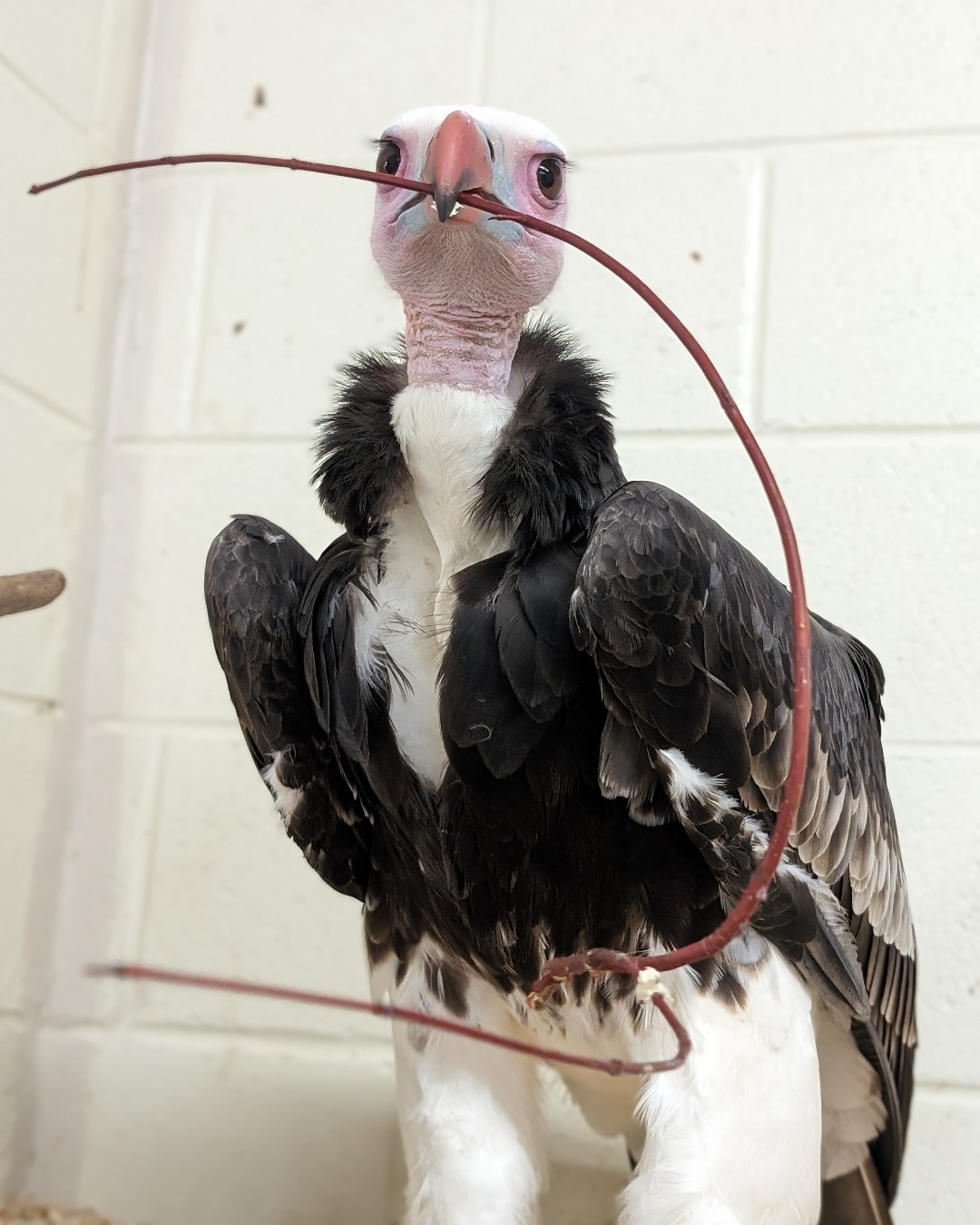– Introduction to Lloyd, the white-headed vulture
– Unique behavior and habitat considerations for captive white-headed vultures
– The role of zoos in wildlife conservation and species recovery
– The importance of enrichment activities for captive birds of prey
Among the avian residents in North America’s zoos, one bird stands out for its distinct appearance and noteworthy rarity. Lloyd, the white-headed vulture, graces one such facility with the poise and distinction befitting his species. Bearing the regal bearing of a bird not commonly seen on this continent, Lloyd’s presence is a testament to zoo management’s conservation efforts and dedication to bringing a slice of the African savannah to American soil.
White-headed vultures, scientifically known as Trigonoceps occipitalis, are a species of Old World vulture native to the savannahs and grasslands of sub-Saharan Africa. As scavengers, these birds play a critical role in their ecosystems, aiding in the disposal of carrion and helping to prevent the spread of disease. With piercing sight and a formidable beak, they are remarkably adapted to their role in nature’s cleanup crew. Lloyd carries these traits, and his stark white plumage and contrasting dark feathers are conspicuous in his American abode.
Captive breeding and management of birds like Lloyd go beyond the spectacle of their presence. They contribute to species survival plans, educational endeavors, and scientific study. Delving into the intricacies of managing animals like Lloyd, one must consider the specialized diets, habitat design, and even psychological well-being that facilitate the thriving of such a creature outside its natural habitat.
The diet of the white-headed vulture in captivity closely mirrors that of the wild, with institutions often providing a variety of meats and supplements to ensure nutritional completeness. Lloyd partakes in a controlled feeding program that mimics the irregular availability of food in nature, thus encouraging natural foraging behaviors critical to his psychological wellness.
Housing a bird of Lloyd’s stature requires meticulously planned enclosures that provide safety and security and enable expressions of innate behaviors. Flight space, perching options, and exposure to natural elements are factored into creating a habitat replicating the open territories these vultures oversee in the wild. Care is taken to balance these needs with the public’s ability to observe and appreciate these magnificent creatures without causing undue stress to the animals.
One of the paramount considerations in Lloyd’s life is enrichment, activities designed to stimulate the bird’s senses and encourage natural behaviors. It has been noted that Lloyd has developed an affinity for collecting sticks and gazing upon his reflection. This behavior could be rooted in natural instinct—such as nest building—or may merely be a source of investigation and play. Regardless, it highlights the importance of behavioral enrichment in maintaining a healthy, mentally stimulated captive animal.
Enrichment comes in varied forms—from physical objects like mirrors and sticks to sensory experiences such as new or unusual scents or sounds to puzzles that demand problem-solving. For a bird like Lloyd, these activities prevent boredom, promote exercise, and ensure mental engagement. Zoo staff often become creative in developing these activities, ever mindful of the species-specific needs that arise from the individual characters of their charges.
Lloyd’s place in North America is more than a novelty in the conversation about wildlife conservation. Species like the white-headed vulture face considerable threats in the wild due to habitat loss, poaching, and poisoning. The IUCN Red List categorizes them as Critically Endangered, with their populations declining. Zoos become ark-like repositories for genetic diversity and living reservoirs from which reintroduction programs can be strategized should conditions allow.
Furthermore, ambassadors like Lloyd facilitate vital education and awareness campaigns. Through his striking presence, guests to the zoo can learn about the plight of vultures worldwide, their ecological importance, and the efforts needed to safeguard them. Engaging the public in such conversations makes these creatures something more than exhibits; they become beacons for broader environmental stewardship.
A sustainable future for white-headed vultures and numerous other threatened species lies in captive care, public education, and wild habitat protection. For Lloyd, his role may seem passive to an observer, yet through him; people see the beauty and necessity of a species fighting for survival against mounting odds. His fair reflection in the mirror represents his allure and the mirrored fate of wildlife and the environment.
Considering Lloyd’s care and the responsibilities inherent in managing such rare wildlife, we find a deeper understanding and respect for nature’s intricate webs. Lloyd’s favorite pastimes may seem simple, even quirky, to us. Still, they reflect the complexities and integrity of his species—a predator whose survival, both in captivity and in the wild, hangs in a delicate balance that humans have the power to tip towards recovery.
While Lloyd may not answer the elusive question of “who’s the fairest of them all,” his grandeur and significance are indisputable. The white-headed vulture’s journey symbolizes the broader challenges facing conservationists and wildlife managers as they forge ahead to preserve Earth’s biological heritage. Through concerted efforts, informed public discourse, and the continued support of conservation programs, the hope is that Lloyd and his kind will endure and thrive again.
*****
Source Description
Mirror on the wall, who’s the fairest predator of them all 👑 Meet Lloyd, a white-headed vulture and only one of two in North America. Lloyd’s favorite hobbies as of late are sticks and looking at his reflection 🪞

